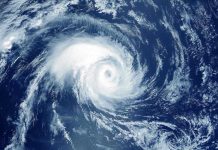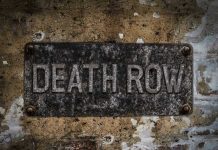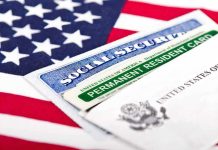
When bullets fly at federal agents in a city neighborhood already simmering with tension, you have to wonder: just how close is the urban fault line between law enforcement and the communities they police to a full-scale rupture?
Story Snapshot
- Border Patrol agents were fired upon during a Saturday morning immigration operation in Chicago’s Little Village.
- Crowds confronted agents with bricks and paint cans, escalating the chaos.
- No injuries reported, but the shooter remains at large as investigations intensify.
- Judicial oversight and community activism are shaping the city’s heated response to federal enforcement.
Shots Fired, Trust Shattered: A Morning in Little Village
November 8, 2025, 9:30 AM—what began as a routine federal immigration operation in Chicago’s Little Village neighborhood quickly spiraled into a scene more reminiscent of a flashpoint in a national debate than a local law enforcement action. Agents deployed under “Operation Midway Blitz” barely had time to establish their presence before a black Jeep rolled up and gunfire cracked through the morning air. No one was hit, but the symbolism was unmistakable: this was no longer just about paperwork and warrants.
Community resistance had been stewing for weeks, with local organizers briefing residents on their rights and preparing for confrontations. As agents found themselves boxed in by a hostile crowd, the escalation was immediate and physical—bricks and paint cans crashed against federal vehicles, and only the rapid arrival of Chicago Police prevented the melee from boiling over. The shooter vanished into the city’s sprawl, but the sense of siege lingered long after the agents withdrew.
Behind the Barricades: Why This Neighborhood Fights Back
Chicago’s Little Village is not a random backdrop for this conflict. Home to generations of Mexican-American families and a tradition of organizing, the neighborhood has a long memory of federal enforcement actions—each one met with increasingly sophisticated resistance. In the weeks leading up to the shooting, “Operation Midway Blitz” had intensified, prompting community leaders and aldermen to call out what they saw as heavy-handed tactics. Know-your-rights sessions, ICE watch patrols, and legal workshops proliferated, all in anticipation of just this sort of showdown.
The federal agents, equipped with legal authority and crowd control tools, found themselves hemmed in not just by protesters, but by the weight of recent judicial intervention. Days earlier, a federal judge had restricted their use of force, responding to reports of excessive measures—including the pepper-spraying of minors and questionable detentions. The line between enforcement and overreach had become so thin that every action was now scrutinized, documented, and, in some cases, litigated almost in real time.
Federal Power, Local Fury: The Politics of Urban Enforcement
The confrontation in Little Village did not unfold in a vacuum. Federal and local authorities have been locked in a power struggle, with the Chicago Police Department acting as both backup and buffer. City officials, under pressure from constituents and advocacy groups, have walked a tightrope—supporting law enforcement’s mandate while condemning abuses and demanding accountability. The judiciary, meanwhile, plays referee, issuing injunctions to keep federal power in check without sacrificing public safety.
For the community, the stakes are existential. Residents see aggressive enforcement as a direct threat to families and livelihoods, fueling a cycle of protest and crackdown. Activists document every encounter, leveraging social media and legal channels to keep the spotlight on what they argue is a violation of civil rights. The result is an atmosphere where every routine operation has the potential to detonate into national news, and where legal precedent is shaped not just in courts, but on the streets.
The Fallout: What Comes Next for Chicago and Beyond
In the immediate aftermath, law enforcement agencies have ramped up their presence, and the search for the gunman continues. Federal operations proceed, albeit under the watchful eye of judicial restrictions and relentless community monitors. No one was physically harmed this time, but the psychological toll—on both agents and residents—is undeniable.
Looking ahead, the Little Village incident is likely to influence not just Chicago’s approach to immigration enforcement, but urban policy nationwide. Calls for reform—from clearer limits on federal force to renewed investment in community relations—will only intensify. The events of that November morning may fade from headlines, but for those living and working along this urban fault line, the questions remain unresolved. How do you enforce the law without eroding trust? And when does community resistance cross the line from protest to open rebellion? With the shooter still at large and tensions unresolved, the city—and the nation—waits uneasily for the next flashpoint.
Sources:
CBS News: Shots fired at Border Patrol agents on Chicago’s West Side, DHS says
ABC News: Chicago police respond to report of shots fired at federal agents
ABC News Video: DHS shooter at large after firing at Border Patrol in Chicago













